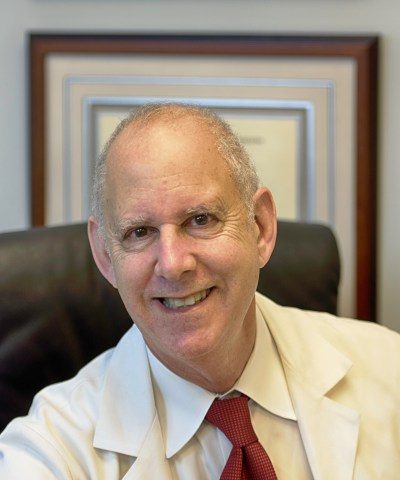By Stephen Z. Fadem, MD, FASN, AAKP Medical Advisory Board Chair
Have you noticed that you cannot run and tumble like a young kid? The younger people working out at the gym are far bulkier than their fathers and grandfathers – and me. On average, professional athletes retire by age 30. Muscle mass generally declines as we age, although we can slow the decline in muscle function through proper diet and increased resistance exercises.

As we age, we notice wrinkles, changes in our sex and bathroom habits, and for many, the onset of ailments like arthritis, heart disease, and cancer. Our skin and other tissues lose collagen and dry out more easily. Sun exposure is partly to thank for this because of oxidizing ultraviolet radiation and its destruction of DNA.
The reproductive organs are supported by a complex hormone system that changes as we age. Even the colon is not spared the aging process.
What we do not recognize, however, is that kidney function also declines with age. It is estimated that after age 40, the glomerular filtration rate (GFR), an index of kidney function, declines at about 8 cc/min/1.73m2 per decade. This may be related to disorders that increase wear and tear on the kidney. These include hypertension, metabolic syndrome, diabetes, obesity, atherosclerosis, inflammation, or the use of cigarettes. This decline does not happen in every elderly person and is related to how well the surface area and permeability of the filter can be preserved.[1]
We may be able to reduce wear and tear by treating underlying disease processes early, thus maximizing blood pressure and metabolic control (diabetes control). Reducing inflammatory processes may prolong both our life and our kidney’s life, but more research is needed.[2] Inflammation triggers factors that damage the kidney through a process known as fibrosis.
Many patients take drugs that work on the renin-aldosterone-angiotensin system (RAAS). These medications control factors that accelerate kidney damage. Renin, when released by the kidney, stimulates the steroid aldosterone to retain sodium to increase volume and blood pressure. Blocking aldosterone may benefit the kidney by controlling volume-related hypertension and reducing the delicate kidney filters (glomeruli) from overworking (hyperfiltration). Aldosterone stimulates the liver’s production of angiotensin I, a well-known hormone that converts to an active form, angiotensin II. This hormone regulates vascular tone, but also disrupts the cytoskeleton structure of the main filtering cell, the podocyte.[3]
Hypertension, diabetes, and the metabolic syndrome damage the kidney through hyperfiltration, worsening kidney function with age.[4] Young kidneys have mechanisms to protect filters from excess flow, pressure, and filtration. With age these mechanisms break down, and underlying disorders accelerate glomerular damage. Managing these conditions can slow the wear and tear on the kidney.
Although diabetes is highly destructive, newer medications that increase the kidney’s excretion of sugar have the unexpected benefit of also changing feedback mechanisms that protect the glomeruli. Likewise, medications that block aldosterone may protect the filters. Studies are underway to determine if the combination of two new classes of drugs –the SGLT2-inhibitors like empagliflozin and dapagliflozin and the novel, nonsteroidal, selective mineralocorticoid receptor antagonists such as finerenone can have an additive effect of protecting the kidney.[5]
Declining kidney function interferes with acid excretion. The body must keep our acid content in check so cells can properly function and does so through buffering excess acids and eliminating them. Acid is toxic to cells, and even mild acidosis can weaken bones and muscles. Changing the diet to include more alkali or taking bicarbonate tablets is helpful.[6] A three-year randomized controlled trial of 795 patients treated with placebo vs sodium bicarbonate demonstrated that with serum bicarbonate targets between 18 and 24 mEq/L, there was a lower risk of renal replacement therapy, progression to kidney disease, and death.[7]
As kidney function declines, there is a decreased ability to eliminate the mineral, phosphorus. Phosphorus is essential for life and is the P in adenosine triphosphate (ATP), the energy packets that drive chemical reactions in the cell. FGF23 is a growth factor that is derived from bone, but when kidney function declines, it boosts phosphorus excretion by the kidney. Its coreceptor, Klotho, is directly involved in slowing the aging process. Animals that lack the Klotho gene age rapidly, while those that over-express the Klotho gene enjoy a longer life. Klotho may also protect the kidneys. Hyperphosphatemia and the elevation of FGF-23 are associated with high mortality in dialysis patients. FGF-23 worsens bone density in older CKD patients.[8] Since hyperphosphatemia is associated with elevated levels of FGF-23, but decreased Klotho, it can accelerate aging.[9] Efforts to control serum phosphorus level are standard care in advanced kidney disease. Klotho is a subject for future study.
Why do we age?
Aging is a balance between the factors that cause wear and tear and the ability to repair and rejuvenate cells. This all starts with DNA, the series of coiled proteins that carry the codes needed to not only pass on life, but to template each and every organ and tissue. DNA constantly works to orchestrate the production of the proteins that form the enzymes necessary for cell function.
While aging is a universal, ubiquitous process that impacts every single cell on this planet, different forms of life age differently. The Antarctic sponge possesses extra stem cells and can live for 15,000 years. Clams produce a low number of oxidative radicals and can live 500 years – unless they wind up in chowder. The Greenland shark has a slow metabolism, and one that was caught was estimated to be 277 years. The bowhead whale is resistant to cancer and can also live over 200 years. Some animals have an exceptional ability to repair DNA. The giant tortoise, Jonathan, is alive and well on a South Atlantic Island; he is 190 years old. The naked mole rat has protective telomeres and can live 31 years – a long time for a rat. (The only rodent who is older is a cartoon figure and corporate symbol.)
If we could someday modulate the wear and tear mechanisms that delay aging in other organisms, we too might enjoy a longer lifespan and a higher quality of life as we age.
Stem cells | Antarctic sponge | 15,000 years
Stem cells are scattered around the body and possess the ability to produce new cells. Unfortunately, stem cells also wear out, and once they do, cannot be renewed. Infused stem cells can either regenerate a cell, an entire organoid, or create hormones that can rejuvenate cells. Stem cells from embryos may increase the risk of tumors and are fraught with legal and ethical considerations. Stem cells from adults have the potential to generate organoids that resemble a new kidney. Cells known as mesenchymal stem cells have the greatest potential to block the risk of acute kidney injury from causing chronic kidney disease. This is all highly experimental.[9]
Clams | 500 years | low numbers of oxidative radicals
Defending against bacteria, viruses, and environmental toxins is a challenge for all forms of life, even clams, who must also defend against plastic wastes that find their way into the water.[10] The complex immune mechanism of vertebrates innately react to an invader by releasing little hormones known as cytokines that turn on cells that attack the pathogen. Meanwhile, macrophage cells (big eaters) gobble up bad guys and tear them apart with powerful oxidants similar to bleach. Their remains become antigens to which the body will make antibodies. The next invasion is met with a destructive response by immune cells. Collateral damage occurs because oxidants can damage any cell they comes in contact with. This is what happened during the Covid-19 pandemic.
The immune system and oxidative stress are not just triggered by invading organisms. Excess dietary fats can induce adipocytes or fat cells to release cytokines. Macrophages inside blood vessels ingest fats to the extent that they become so engorged they die – and calcify. This the mechanism for atherosclerosis.
A third source of oxidative stress is the mitochondrion, intracellular organelles that form the energy packets we refer to as ATP. This organelle has enzymes to break down glucose or oxidize fatty acids, releasing and capturing electrons, and transporting them down a chain of factors. The electrons drive reactions that produce ATP and then move on. Ultimately, they reach oxygen, an electron-hungry atom that combines to form carbon dioxide (CO2) and water. CO2 is released through respiration back to the environment. If there are any mishaps, free electrons can go wild and destroy other body tissues. Nothing is safe from oxidative stress – mitochondria, stem cells, and DNA.
Without DNA to conduct how proteins are made and without the energy to drive biochemical reactions, the cell cannot function. Since the process is not perfect, there is always a minor leak of free radicals, and over the years, it wears down the organism.
Inflammation also causes insulin resistance. This happens when cytokines block insulin’s ability to signal or direct glucose entry into the cell. This leads to sugar spikes that overwork the pancreas, contributing to its progressive damage. Sugar also promotes factors that lead to fibrosis or scarring of kidney tissues.
Greenland shark | 392 years | slow metabolism
Cold water adaptation may help explain the lifespan of the longest-living vertebrate, the Greenland shark.[11] This animal has a slow metabolism – a heartbeat every 12 seconds, and has lived for nearly 4 centuries. They are also resistant to cancer.[12] Studying these mysterious animals can unlock some of the deep, dark secrets of aging.
Bowhead whale | 200 years | cancer resistance
This large sea mammal has no natural predators, reproduces slowly, and can survival for 200 years. Its DNA does not mutate or break easily, and thus the DNA repair mechanism present in all cells does not become overwhelmed. There is a cold-induced RNA binding protein that is turned on by cold weather, ultraviolet light, and hypoxia. The whale has less IgF1 and thus preserves FOXO activation. It has less spermatogenesis. Its lifestyle is conducive to longevity.[13] It is also resistant to cancer.[14]
While we cannot live like whales – we can increase our intake of cold water fats that reduce oxidation. Cold weather may improve mitochondrial function.[15] There are no studies looking at cold showers and kidney function, however.
Giant tortoise | > 190 years | DNA repair
DNA is easily damaged – especially by inflammation and oxidation. It is a repeating sequence of molecules known as nucleotides. There are four types of nucleotides, and through different combinations, they produce all of the proteins, enzymes, and cell parts we need. DNA is also capable of self-repair through an elaborate mechanism as old as DNA itself. When the damaging events encountered in our environment exceed the repair capacity, DNA becomes permanently damaged and is taken out of commission, leading to cellular defects than ultimately cause death. This repair system is known as epigenetics, and not related to DNA heredity.[16] Although highly complex, DNA repair involves marking the damaged area, shutting down and unwrapping the DNA coil fixing the break, and then put the DNA back into service.
DNA repair mechanisms become less efficient with age, thus accelerating aging. The factors required for DNA repair are produced in lesser qualities,[17] and environmental toxins damage DNA or the mechanism that senses the need for repair.[18]
Naked mole rat | 31 years | telomeres
Those plastic caps on your shoelaces prevent them from fraying. DNA is a coiled molecule that also frays with age, and the telomeres at their ends help protect the fraying. However, with aging, the telomeres get shorter and shorter. Extensive fraying causes signaling that removes the DNA and recycles it. Thus, the DNA can no longer make the designated proteins or enzymes needed for cell survival.
Certain foods that are high in antioxidants can cause the telomeres to last longer, On the other hand, some medications shorten telomeres, hastening permanent cell damage. In organs like the brain and kidney, these medications may play a role in the development of dementia or kidney failure.[19]
Longevity in other organisms | C elegans | DAF-16
Longevity can be regulated by genes.[20, 21] In the Caenorhabditis elegans, a roundworm, a longevity gene, has been identified, and is now known to be present across the animal kingdom. It works on the insulin pathway that in addition to allowing glucose entry into cells controls pathways that preserve cells and slow aging. This seems to vary depending upon nutrient regulation. Insulin triggers a pathway inside the cell that essentially turns off Forkhead box protein O (FOXO), a member of the Forkhead gene family.[22] FOXO is able to turn on cell recycling (autophagy), cell repair, and rescue mechanisms that preserve the cell. It can even turn on mechanisms that detoxify the cells of free radicals. Genetic mechanisms that increase FOXO or, in roundworms, a FOXO equivalent protein DAF-16 can improve the lifespan of the animal. Human variants in FOXO are associated with longevity, but this lifespan increase can be obliterated by diabetes. Lifespan was repressed in roundworms fed a high glucose diet. Exercise and caloric restriction decrease FOXO, and also work through an energy-sensing enzyme known as AMP kinase (AMPK). When glycogen is abundant, the enzyme is turned off. However, when the enzyme senses that glycogen stores are low, it turns on FOXO and mechanisms that conserve energy.[23, 24]
The acceleration of aging is present in diabetes. We are learning that longevity can be managed by avoiding foods that turn off FOXO – especially raw sugar, and also weight loss.[25, 26]
Tips for kidney longevity
Aging in the kidney, as in the patient, is a fertile area for research. We lack definitive answers but have some basic principles. We know more about what harms the kidney and accelerates premature dysfunction, so a simple caveat is to start young in life and actively treat underlying conditions like hypertension, diabetes, and the metabolic syndrome.
Many factors associated with kidney aging are beyond our control, but others can be managed through lifestyle modification. Aging goes hand in hand with progressive kidney disease. Therefore, early measures to preserve function will set you higher on the slope, so that if kidney function deteriorates, it remains above the threshold that requires renal replacement therapy.
Obesity is a risk factor for CKD because it overworks the kidneys. As the incidence of obesity rose as a national trend, glomerular disease increased 10-fold. The mechanisms include much of what was discussed above – oxidative stress, insulin resistance, inflammation, and RAAS activation.[27]
Diet control is challenging to study and also to initiate. Observational evidence does suggest that a plant dominant diet composed of over 50% foods derived from fruit and vegetables may help preserve kidney function.[28]
Following the advice of your doctor regarding a diet and medications for diabetes, metabolic syndrome, or hypertension control will reduce the endpoints from these disorders that are associated with kidney damage.
The aging kidney potentiates muscle weakness. This is worsened by immobility, metabolic acidosis, and underlying clinical conditions.[29] Resistance exercises can help slow muscle wasting in the elderly.[30] It is not clear that exercise can reverse a trend toward kidney function decline, but it can reduce some of the complications associated with CKD. Regardless of how much exercise you get, it is essential to avoid immobility.[31] It is also important to incorporate strategies into one’s lifestyle to avoid falls, as they result in immobility, worsened sarcopenia, and a higher mortality rate.[32, 33]
Conclusion
Aging in the kidney parallels systemic aging. While this is an area of active research, there are some basics we are aware of that can slow progression, particularly when underlying diseases like hypertension, diabetes, or the metabolic syndrome are present.
References:
1. Weinstein JR, Anderson S. The aging kidney: physiological changes. Adv Chronic Kidney Dis. 2010;17(4):302-7. doi: 10.1053/j.ackd.2010.05.002.
2. Rapa SF, Di Iorio BR, Campiglia P, Heidland A, Marzocco S. Inflammation and Oxidative Stress in Chronic Kidney Disease-Potential Therapeutic Role of Minerals, Vitamins and Plant-Derived Metabolites. Int J Mol Sci. 2019;21(1). doi: 10.3390/ijms21010263.
3. Erichsen L, Thimm C, Bohndorf M, Rahman MS, Wruck W, Adjaye J. Activation of the Renin-Angiotensin System Disrupts the Cytoskeletal Architecture of Human Urine-Derived Podocytes. Cells. 2022;11(7). doi: 10.3390/cells11071095.
4. Bystad EW, Stefansson VTN, Eriksen BO, Melsom T. The Association Between Metabolic Syndrome, Hyperfiltration, and Long-Term GFR Decline in the General Population. Kidney Int Rep. 2023;8(9):1831-40. doi: 10.1016/j.ekir.2023.06.022.
5. Rebelos E, Tentolouris N. Complementary actions of finerenone and SGLT2-i on renal outcomes?: An urgent need for more information. Nephrology (Carlton). 2022;27(12):915-6. doi: 10.1111/nep.14124.
6. Imenez Silva PH, Wesson DE, Wagner CA. The mechanisms of alkali therapy in targeting renal diseases. Biochem Soc Trans. 2023;51(1):223-32. doi: 10.1042/bst20220690.
7. Di Iorio BR, Bellasi A, Raphael KL, Santoro D, Aucella F, Garofano L, et al. Treatment of metabolic acidosis with sodium bicarbonate delays progression of chronic kidney disease: the UBI Study. Journal of nephrology. 2019;32(6):989-1001. doi: 10.1007/s40620-019-00656-5.
8. Isakova T, Cai X, Lee J, Katz R, Cauley JA, Fried LF, et al. Associations of FGF23 With Change in Bone Mineral Density and Fracture Risk in Older Individuals. J Bone Miner Res. 2016;31(4):742-8. doi: https://doi.org/10.1002/jbmr.2750.
9. John GB, Cheng CY, Kuro-o M. Role of Klotho in aging, phosphate metabolism, and CKD. Am J Kidney Dis. 2011;58(1):127-34. doi: 10.1053/j.ajkd.2010.12.027.
10. Esterhuizen M, Buchenhorst L, Kim YJ, Pflugmacher S. In vivo oxidative stress responses of the freshwater basket clam Corbicula javanicus to microplastic
fibres and particles. Chemosphere. 2022;296:134037. doi: https://doi.org/10.1016/j. chemosphere.2022.134037.
11. Wojtczyk-Miaskowska A, Schlichtholz B. DNA damage and oxidative stress in long-lived aquatic organisms. DNA Repair. 2018;69:14-23. doi: https://doi.org/10.1016/j. dnarep.2018.07.003.
12. Nielsen J, Hedeholm RB, Heinemeier J, Bushnell PG, Christiansen JS, Olsen J, et al. Eye lens radiocarbon reveals centuries of longevity in the Greenland shark
(Somniosus microcephalus). Science. 2016;353(6300):702-4. doi: 10.1126/science. aaf1703.
13. Lagunas-Rangel FA. Deciphering the whale’s secrets to have a long life. Exp Gerontol. 2021;151:111425. doi: 10.1016/j.exger.2021.111425.
14. Denis F, Max Z, Xiao T, Yang Z, John CG, Todd LS, et al. DNA repair and anti-cancer mechanisms in the longest-living mammal: the bowhead whale. bioRxiv. 2023:2023.05.07.539748. doi: 10.1101/2023.05.07.539748.
15. Chung N, Park J, Lim K. The effects of exercise and cold exposure on mitochondrial biogenesis in skeletal muscle and white adipose tissue. J Exerc Nutrition Biochem. 2017;21(2):39-47. doi: 10.20463/jenb.2017.0020.
16. Karakaidos P, Karagiannis D, Rampias T. Resolving DNA Damage: Epigenetic Regulation of DNA Repair. Molecules. 2020;25(11). doi: 10.3390/molecules25112496.
17. Gorbunova V, Seluanov A. DNA double strand break repair, aging and the chromatin connection. Mutat Res. 2016;788:2-6. doi: 10.1016/j.mrfmmm.2016.02.004.
18. van der Laan L, Cardenas A, Vermeulen R, Fadadu RP, Hubbard AE, Phillips RV, et al. Epigenetic aging biomarkers and occupational exposure to benzene, trichloroethylene and formaldehyde. Environ Int. 2022;158:106871. doi: 10.1016/j. envint.2021.106871.
19. Srinivas N, Rachakonda S, Kumar R. Telomeres and Telomere Length: A General Overview. Cancers (Basel). 2020;12(3). doi: 10.3390/cancers12030558.
20. Singh PP, Demmitt BA, Nath RD, Brunet A. The Genetics of Aging: A Vertebrate Perspective. Cell. 2019;177(1):200-20. doi: 10.1016/j.cell.2019.02.038.
21. Tyshkovskiy A, Ma S, Shindyapina AV, Tikhonov S, Lee SG, Bozaykut P, et al. Distinct longevity mechanisms across and within species and their association with aging. Cell. 2023;186(13):2929-49.e20. doi: 10.1016/j.cell.2023.05.002.
22. Martins R, Lithgow GJ, Link W. Long live FOXO: unraveling the role of FOXO proteins in aging and longevity. Aging Cell. 2016;15(2):196-207. doi: 10.1111/
acel.12427.
23. Greer EL, Banko MR, Brunet A. AMP-activated protein kinase and FoxO transcription factors in dietary restriction-induced longevity. Ann N Y Acad Sci. 2009;1170:688-92. doi: 10.1111/j.1749-6632.2009.04019.x.
24. Fadem SZ. Staying Healthy with Kidney Disease - A Complete Guide. 1 ed. New York: Springer-Nature; 2022.
25. Dobson AJ, Ezcurra M, Flanagan CE, Summerfield AC, Piper MDW, Gems D, Alic N. Nutritional Programming of Lifespan by FOXO Inhibition on Sugar-Rich Diets. Cell Rep. 2017;18(2):299-306. doi: 10.1016/j.celrep.2016.12.029.
26. Rippe JM, Angelopoulos TJ. Relationship between Added Sugars Consumption and Chronic Disease Risk Factors: Current Understanding. Nutrients. 2016;8(11). doi: 10.3390/nu8110697.
27. Kovesdy CP, Furth SL, Zoccali C. Obesity and Kidney Disease: Hidden Consequences of the Epidemic. Can J Kidney Health Dis. 2017;4:2054358117698669. doi: 10.1177/2054358117698669.
28. Kalantar-Zadeh K, Joshi S, Schlueter R, Cooke J, Brown-Tortorici A, Donnelly M, et al. Plant-Dominant Low-Protein Diet for Conservative Management of Chronic Kidney Disease. Nutrients. 2020;12(7). doi: 10.3390/nu12071931.
29. Mitch WE, Fadem SZ. Muscle Breakdown in Kidney Disease: Mechanisms and Management Strategies. In: Fadem SZ, editor. Staying Healthy with Kidney Disease: A Complete Guide for Patients. Cham: Springer International Publishing; 2022. p. 83-6.
30. Nguyen ML, Fadem SZ. Exercises for People with Chronic Kidney Disease and Seniors. In: Fadem SZ, editor. Staying Healthy with Kidney Disease: A Complete Guide for Patients. Cham: Springer International Publishing; 2022. p. 87-101.
31. Fadem S, Moura-Neto J, Golper T, editors. Complications in Dialysis. New York: Springer-Nature; 2023.
32. Fadem SZ. Falls in CKD Patients and Seniors: Causes and Prevention. In: Fadem SZ, editor. Staying Healthy with Kidney Disease: A Complete Guide for Patients. Cham: Springer International Publishing; 2022. p. 103-12.
33. Fadem S. Understanding and Preventing Falls. Cham, Switzerland: Springer Nature; 2023.
Dr. Fadem is a champion for chronic kidney disease education. He is a Clinical Professor of Medicine, Baylor College of Medicine, Section of Nephrology. Dr. Fadem attended Tulane University and graduated from the University of Oklahoma College of Medicine. After he completed his internship and residency at the University of Texas Health Science Center – MD Anderson and Hermann Hospitals, he did a renal fellowship at the University of Texas Health Science Center, San Antonio.
Dr. Fadem was one of the first doctors to discover the value of the internet for patient education, and founded several websites dedicated to public service and the dissemination of clinical information including The Nephron Information Center, Wikikidney, Touchcalc, and dialysisunits.com. He has participated heavily in the development and revisions of numerous AAKP patient education materials including the “AAKP Patient Plan” series and the “AAKP Kidney Beginnings: A Patient’s Guide to Living with Reduced Kidney Function.”
Dr. Fadem is the recipient of the National Kidney Foundation’s Distinguished Service Award, the AAKP Visionary Award, the AAKP Peter Lundin, MD Award, the AAKP Medal of Excellence, and the President’s Volunteer Service Award. Dr. Fadem is listed in America’s Top Doctors. He serves as editor of aakpRENALIFE magazine, and as historian for AAKP.
























